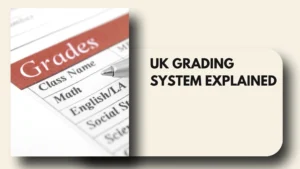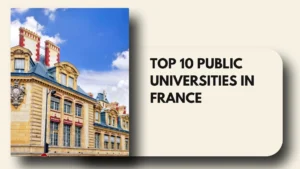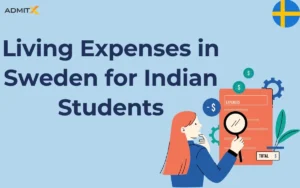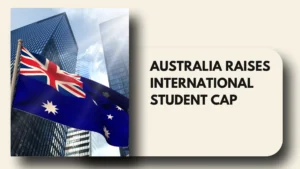- Three primary pathways to Australian PR are Skilled Independent (189), State Nominated (190), and Regional Provisional (491) visa routes.
- Temporary Graduate Visa Subclass 485 serves as the critical bridge between completing your Australian degree and applying for permanent residency.
- Australian PR eligibility requires minimum 65 points, though competitive reality demands 80-95 points for Subclass 189 invitation rounds.

Getting into your favourite Australian university is full of excitement, but here’s what most Indian students think about next: can this student visa turn into permanent residency someday? The answer is yes, and thousands of Indian graduates make this journey every year.
Australia offers clear pathways to convert your student visa into PR, but it needs strategic planning from day one. In this blog, we will walk you through the exact steps, visa options, points system, and tips to successfully transition from student visa to PR in Australia.
Your Australian Visa Journey: Student to PR Timeline
Understanding the typical visa progression helps you plan your pathway from day one. Here’s how your visa status evolves:
| Timeline | Visa Type | Duration |
|---|---|---|
| Year 1-4 | Student Visa (Subclass 500) | Course duration (max 5 years) |
| Year 3-7 | Temporary Graduate Visa (Subclass 485) | 2-3 years* |
| Year 5-8 | Pathway A: Subclass 189/190 (Permanent) | Permanent |
| Year 5-10 | Pathway B: Subclass 491 (Regional Provisional) | 5 years |
| Year 8-13 | Subclass 191 (from 491 only) | Permanent |
Temporary Graduate Visa (Subclass 485) in Australia
The Temporary Graduate Visa (Subclass 485) serves as this bridge between academic completion and permanent residency eligibility. Most Indian students utilise this visa to remain in Australia, gaining valuable work experience, enhancing English language proficiency scores, and strengthening their credentials for a competitive PR application.
How Long Can Indian Students Stay on the 485 Visa?
| Qualification Level | Duration |
|---|---|
| Bachelor's Degree (including Honours) | Up to 2 years |
| Bachelor's degree (first-class honours in STEM, including ICT) | Up to 3 years |
| Master's (by Coursework or Research) | Up to 3 years |
| Doctoral Degree (PhD) | Up to 4 years |
Permanent Residency in Australia
Permanent Residency (PR) allows you to live, work, and study in Australia indefinitely. You can enrol in Medicare (Australia’s universal healthcare system), sponsor eligible family members including partners, children, and parents, and apply for Australian citizenship after living lawfully in Australia for 4 years, including at least 12 months as a permanent resident. Unlike temporary visas, PR offers long-term security and access to better career opportunities, home loans, and social benefits.
Three Main Pathways from 485 Visa to PR
After you secure your 485 visa and start working in Australia, you have three primary pathways to permanent residency. Each pathway has different requirements, and choosing the right one depends on your occupation, work experience, English proficiency, and points score.
Subclass 189: Skilled Independent Visa
A points-based permanent visa that allows you to live and work anywhere in Australia without needing a sponsor, state nomination, or any regional commitments – it’s the most flexible option but requires the highest points score to be competitive.
Eligibility Requirements:
- Minimum 65 points to submit EOI
- Competitive reality: 85-95 points needed for invitation
- Occupation on MLTSSL (212 occupations eligible)
- Positive skills assessment required
Key Benefits:
- Live and work anywhere in Australia permanently
- No sponsorship needed
- Access to Medicare and government services
Subclass 190: Skilled Nominated Visa
A permanent visa where you receive 5 bonus points by getting nominated by an Australian state or territory, making it easier to qualify than the 189, but you must commit to living and working in that specific state for the first 2 years after getting PR.
Eligibility Requirements:
- State nomination adds 5 bonus points
- Occupation on MLTSSL (212) or STSOL (215)
- Minimum 65 points including state nomination
- Live in nominating state for 2 years after PR
- Each state has specific criteria
Key Benefits:
- Extra 5 points boost invitation chances
- Competitive scores typically 70-80 points
- Permanent residency with family sponsorship
Subclass 491: Skilled Work Regional Visa
A 5-year provisional (temporary) visa that gives you a massive 15 bonus points through state or family sponsorship, making it the easiest pathway for lower scorers, but requires you to live and work in designated regional areas (excluding major cities like Sydney, Melbourne, and Brisbane) before you can apply for permanent residency later.
Eligibility Requirements:
- State nomination or family sponsorship adds 15 points
- Minimum 65 points including nomination
- Occupation on MLTSSL, STSOL, or ROL (77 regional occupations)
- Live in regional areas (outside Sydney, Melbourne, Brisbane)
Key Benefits:
- Massive 15 points boost for lower scorers
- Can move between regional areas (Perth, Gold Coast, Newcastle, Adelaide, Hobart, Canberra)
Eligibility Requirements for PR in Australia for International Students
To be considered for Australian permanent residency, applicants must achieve a minimum threshold of 65 points. Your overall score directly impacts your chances of receiving an invitation – higher scores lead to faster processing. Candidates scoring between 80-85 points typically receive invitations more quickly.
| Category | Maximum Points |
|---|---|
| Age (25-32 years) | 30 points |
| English Proficiency (Superior: IELTS 8.0 or equivalent) | 20 points |
| English Proficiency (Proficient: IELTS 7.0 or equivalent) | 10 points |
| Work Experience in Australia (8-10 years) | 20 points |
| Work Experience in Australia (3-4 years) | 10 points |
| Work Experience outside Australia (8-10 years) | 15 points |
| Doctorate Degree from Australia or recognized overseas university | 20 points |
| Bachelor's or Master's Degree | 15 points |
| Diploma or Trade Qualification | 10 points |
| Master's by Research or Doctorate in STEM | 10 points |
| Skilled Partner (meets age, skills, English requirements) | 10 points |
| Single Applicant or Partner with Australian Citizenship/PR | 10 points |
| State Nomination (190 visa) | 5 points |
| Regional Nomination (491 visa) | 15 points |
| Professional Year Program in Australia | 5 points |
| NAATI Community Language Accreditation | 5 points |
| Regional Study in Australia | 5 points |
Age Factor (Maximum: 30 points) Peak points are awarded to candidates aged 25-32 years. Note that you must be under 45 years old to be eligible for PR applications.
English Language Ability (Maximum: 20 points) Achieving 8 bands in IELTS grants you the full 20 points. Australian immigration accepts multiple English proficiency assessments, including IELTS and PTE, giving you flexibility in demonstrating language competency.
International Work History (Maximum: 15 points) Having 8-10 years of skilled professional experience abroad within the past decade earns you 15 points. Less experience translates to fewer points proportionally.
Australian Work History (Maximum: 20 points) Employment timeline within Australia scores as follows:
- Under 1 year: 0 points
- 1-2 years: 5 points
- 3-4 years: 10 points
- 5-7 years: 15 points
- 8-10 years: 20 points
Academic Credentials (Maximum: 20 points) Your educational background determines your score:
- Doctoral qualifications (Australian institution or internationally recognized): 20 points
- Bachelor’s or Master’s degrees (Australian or recognized international institution): 15 points
- Australian Diploma or trade certification: 10 points
- Relevant credentials recognized by your occupation’s assessment body: 10 points
Specialized Qualifications (Maximum: 10 points) Research-based Master’s or Doctoral degrees in STEM disciplines from Australian institutions qualify for additional points.
Step-by-Step Application Process for Australian PR
Phase 1: Eligibility Verification Confirm you meet all baseline requirements, verify your occupation appears on demand lists, and calculate your points total.
Phase 2: Skills Verification Obtain assessment from the designated Skills Assessment Authority, which evaluates your qualifications, professional experience, and educational background against Australian benchmarks.
Phase 3: Language Testing Complete an approved English proficiency examination. Australia accepts various testing formats including IELTS and PTE, offering flexibility in meeting language requirements.
Phase 4: Expression of Interest Submission Create and submit your Expression of Interest (EOI) through the SkillSelect online platform. This involves completing a comprehensive form detailing your qualifications based on your chosen visa category:
- Subclass 189: Skilled Independent Visa
- Subclass 190: Skilled Nominated Visa
- Subclass 491: Skilled Regional (Provisional) Visa
The first two options provide permanent residency immediately, while the third offers a five-year provisional visa convertible to permanent residency.
Phase 5: Invitation Receipt Following EOI submission and requirements verification, you’ll receive an Invitation to Apply (ITA) for permanent residency.
Phase 6: Formal Application Submission Submit your complete PR application within 60 days of receiving your ITA. Include all necessary documentation: personal identification, immigration papers, and professional experience verification.
Phase 7: Visa Approval and Migration Upon approval, receive your PR visa and proceed with your relocation to Australia
Key Takeaways
Your Australian student visa can become permanent residency, but it requires deliberate action from day one. After graduation, the 485 Graduate visa buys you 2-4 years to gain Australian work experience and boost your points score. Most Indian students need 80-95 points for Subclass 189 invitations, though state nomination (190) or regional pathways (491) offer realistic alternatives with lower competition.
Smart moves include choosing in-demand occupations from MLTSSL, targeting 8.0 in IELTS for maximum points, gaining 3+ years Australian work experience, and enrolling in a Professional Year Program. Start calculating your points early and plan your pathway based on your realistic score.
Dreaming of studying in Australia? With time and commitment, your student journey can lead to permanent residency. AdmitX helps you take the first step by securing your place in Australia. We support you with:
- University Selection Guidance
- SOP Review
- Study-Abroad Document Templates
- Free IELTS Bootcamp Course
- Scholarship Assistance
- Visa Support Services
And much more!
Book your FREE study abroad counselling session with our experts today!
FAQs
Can Indian students convert their Australian student visa to PR?
Yes, through the Temporary Graduate Visa (Subclass 485) followed by skilled migration pathways like Subclass 189, 190, or 491.
How many points do you need for Australian PR in 2025?
Minimum 65 points to submit an Expression of Interest, but competitive invitations typically require 80-95 points for Subclass 189.
How long can you stay in Australia after graduation on a 485 visa?
Bachelor’s graduates get 2 years, Master’s graduates get 3 years, and PhD holders receive 4 years on the post-study work visa.
What is the easiest PR pathway for Indian students in Australia?
Subclass 491 Regional Visa offers 15 bonus points and lower competition, requiring 3 years of regional work before converting to permanent residency.
Does Australian work experience help in getting PR
Yes, 3-4 years of skilled work experience in Australia adds 10 points, whilst 8-10 years grants the maximum 20 points towards PR eligibility.
Can you apply for Australian citizenship after getting PR
Yes, you can apply for citizenship after living in Australia for 4 years, including at least 12 months as a permanent resident.
Do Australian employers sponsor international students for PR?
Yes, through the Employer Nomination Scheme (Subclass 186) if you’ve worked for an approved employer for 3 years in your nominated occupation.
Which Australian states are easiest for PR nomination?
South Australia, Tasmania, and Northern Territory have lower competition and more occupations on their state nomination lists.
Can you lose Australian PR if you leave the country?
Your PR status remains valid, but you need a Resident Return Visa (Subclass 155/157) to re-enter Australia if your initial travel facility expires after 5 years.
What jobs are most in demand for Australian PR in 2026?
Registered nurses, software engineers, accountants, civil engineers, and secondary teachers consistently receive the highest number of PR invitations annually.
If you are an aspirant looking to study at your dream university, book an appointment with AdmitX today and start your applications early to avail yourself of all the benefits.

















